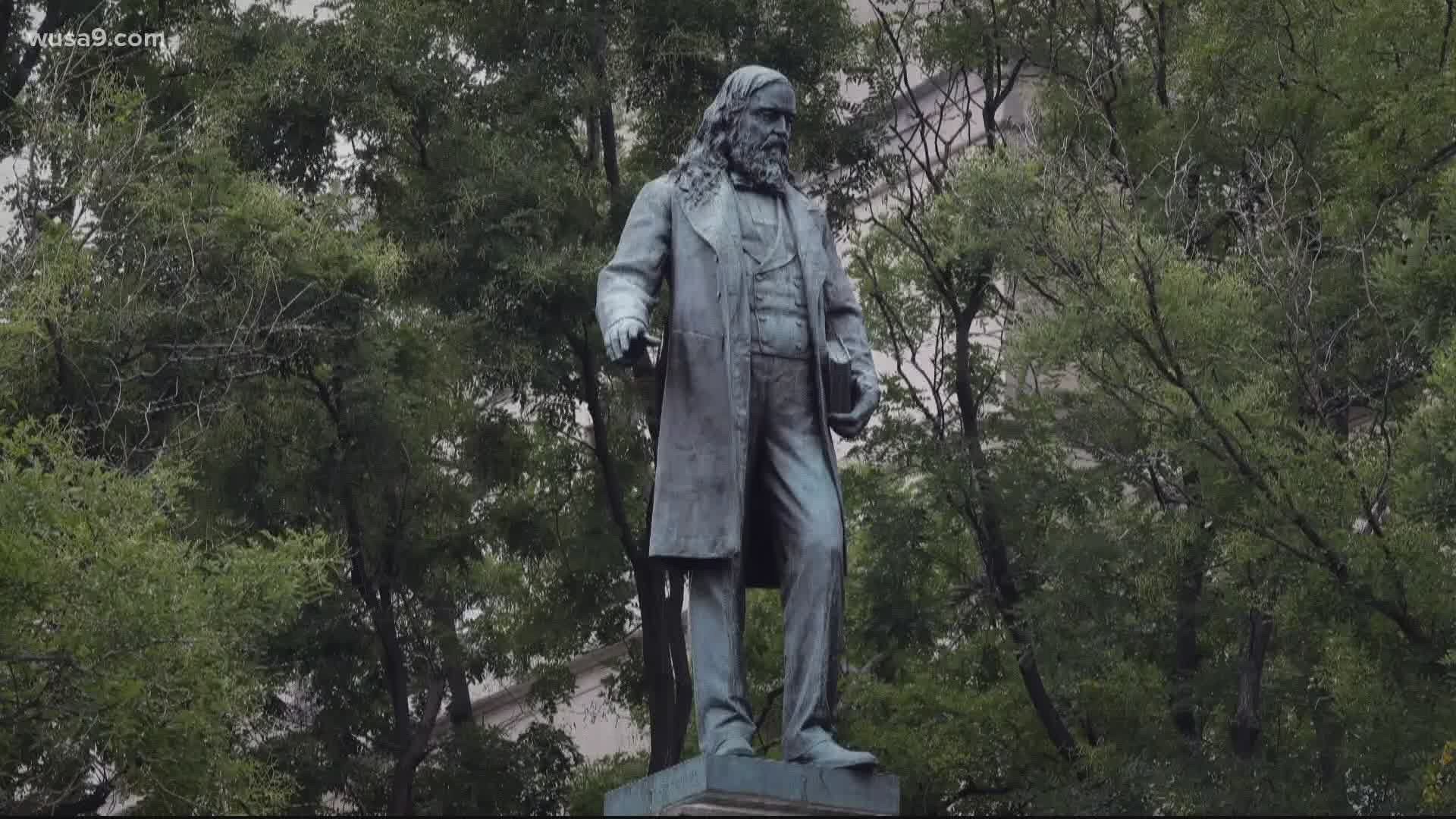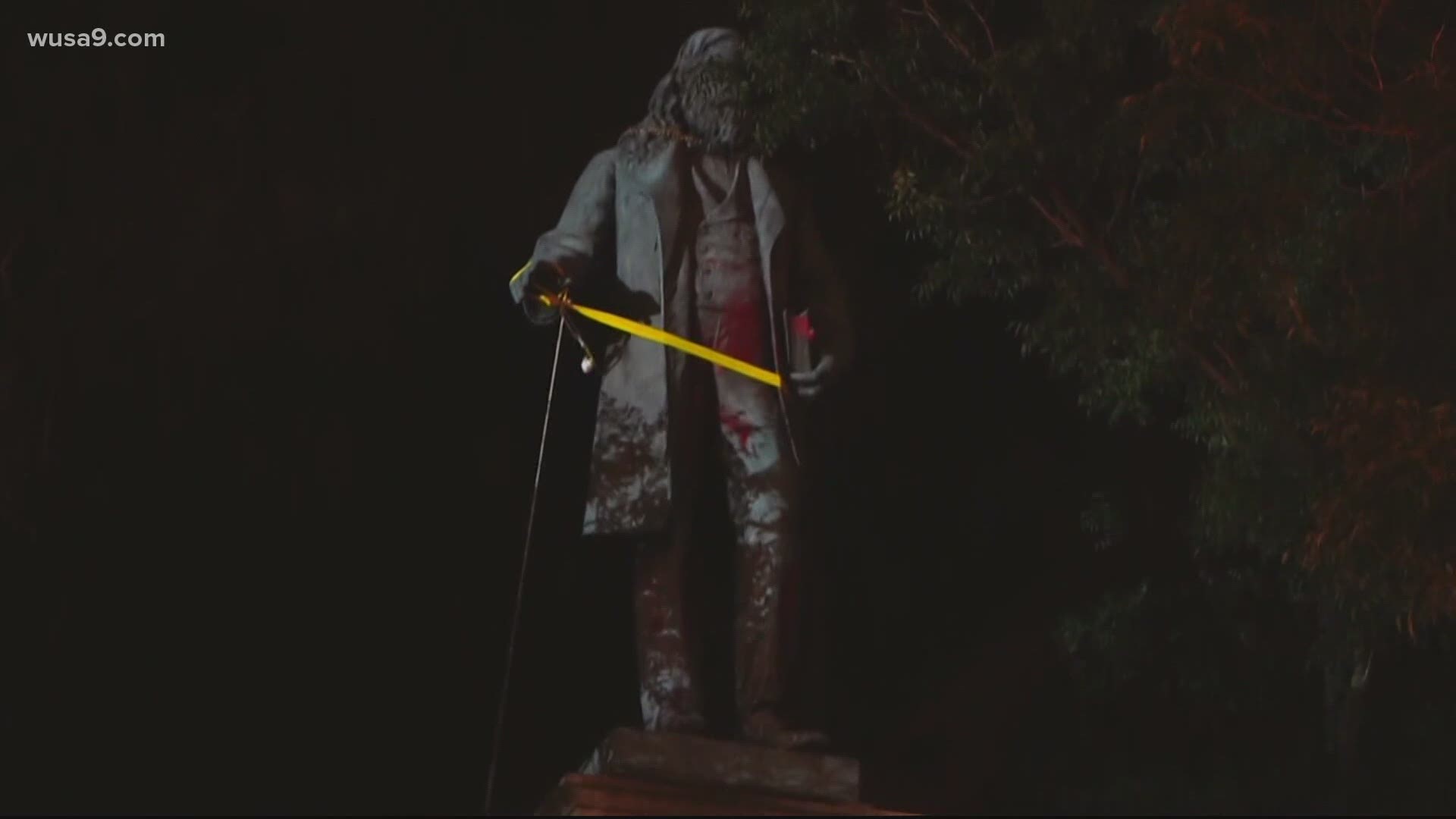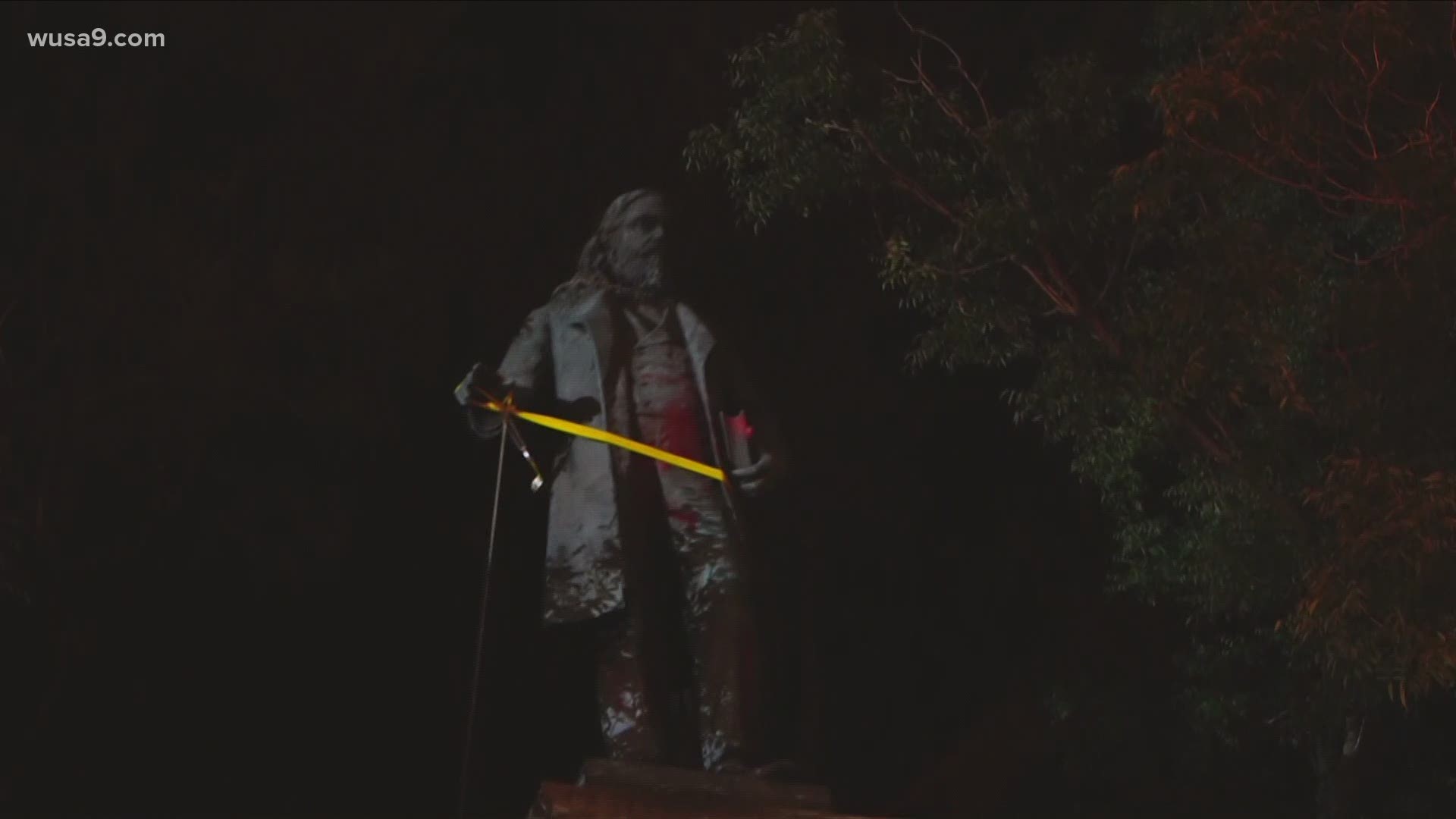WASHINGTON — After Black Lives Matter protesters tore down and burned D.C.’s long controversial Albert Pike statue back in June, President Donald Trump reportedly has called for the statue to be put back up, according to Congresswoman Eleanor Holmes Norton.
The District's lone representative on Capitol Hill, however, says that Confederate statues should be placed in museums.
"The take-down by mobs or crowds is the most inappropriate way of doing it," Delegate Eleanor Holmes-Norton said.
The District's non-voting member of Congress, urged her colleagues in a Subcommittee hearing Tuesday to make the removal permanent by introducing a bill to Congress.
Speaking to members of the Subcommittee on National Parks, Forests, and Public Lands, Holmes-Norton said, "Pike was a Confederate General who served dishonorably and was forced to resign. It became learned that soldiers under his command mutilated the bodies of Union soldiers and Pike was ultimately imprisoned."
“General Albert Pike was probably the worst of the memorialized Confederates. He slaughtered Union troops, a war crime, stole funds, and was captured by his own troops. His statue should be preserved in a museum, where it can be properly interpreted,” Norton said in a news release.
Holmes-Norton said it was a full-circle moment for Congress, the same body that commissioned the statue in 1898 when DC did not have home rule.
According to the DC Historic Sites, lawmakers only approved of the statue because Pike was to be depicted as a Freemason and not a Confederate soldier.
"It is essential that we tell a story that can be embraced by all Americans,” Subcommittee Chair Rep. Deb Haaland of New Mexico said.
“Contextualize that person and use it as a teaching moment because the level of ignorance, civil ignorance about our history is appalling,” Dr. Joseph Loconte, historian, and Director of the Kenneth Simon Center for American Studies at The Heritage Foundation said.
“We should absolutely have monuments that represent our shared values of justice and equality, but we can’t do that if we think what we have on our current landscape represents that,” added public historian Christy Coleman who testified.
New Orleans former Mayor Mitch Landrieu also testified.
The Mayor signed off on the removal of his city’s confederate statue in 2017.
“It is evident these men did not fight for the United States of America they fought to destroy it, they may have been warriors, but they certainly were not patriots," said Landrieu, "We should always remember so we do not repeat, but reverence is saved for those who I think represent the best values America has to offer."
The Albert Pike statue, which has been at the center of a number of protests in D.C. over the years, was one of many statues destroyed nationwide by protesters looking to stamp out icons linked to racist elements in American history.
The proposed bill goes to a full committee for consideration in a couple of months. There is another effort making its way through Congress in attempts to prevent the President from restoring the Albert Pike statue.
Who Was Albert Pike?
The statue was originally erected as a salute to Pike's time as a Freemason.
Born in Boston, Massachusetts in 1809, Pike planned on attending Harvard but ultimately could not afford tuition. Instead, he roamed to New Mexico and eventually Fort Smith, Arkansas, where he taught law and became politically active.
In 1850, he organized the Know-Nothing Party, which campaigned on anti-immigration beliefs and emphasized the use of slaves as more "efficient than farm labor."
Pike was also pro-Indian, representing a handful of Native American tribes in settlement cases against the government. That lead him to be named the commissioner of Indian Affairs for the Confederacy at the start of the Civil War, where he was then named a brigadier general.
His time as a general in the Confederacy lasted a little over two years before he was charged with misappropriating funds and letting his troops mutilate Union soldiers in an 1862 battle.
Arguing with other Confederate leaders after being accused of treason, Pike ultimately mailed in his resignation letter and retreated to Tennessee — where civil rights leaders said he was rumored to have written the rituals of the Ku Klux Klan, although various history blogs have said this was not certain.
A poet and lawyer, Pike was responsible for growing the biggest Scottish Rite branch of the Free Masons, who considered him an influential leader and who paid for the statue, which was first commissioned in 1901. He moved into D.C.'s Scottish Rite temple in 1873, eventually dying in the District in 1891.
The statue itself depicted Pike as a Freemason, not as a soldier, which was why Congress granted permission for the statue to be erected.
According to Congresswoman Norton, as of late, the Freemasons decided to support the statue's removal.
“That Albert Pike statute is up here only because the Freemasons erected it, and Albert Pike was a Freemason. To the credit of the Freemasons, they joined me in wanting the statue to be taken down and I give them all due credit to that,” Norton said.
History of the Pike Statue Controversy
The controversy over the statue isn't new.
Councilmember Bill Lightfoot initiated legislation calling for the removal of the statue back in 1992. In 2017, protesters circled the monument after a Unite the Right rally, calling for it to be torn down, a sentiment echoed by DC Council.
And in July 2019, Congresswoman Norton introduced a bill to remove the statue but still preserve its history.
"I have no doubt I could have gotten that bill through, but the people got here before due process and the process that Congress could do it," Norton said. “If you were to rank Confederate generals who should not be honored, Albert Pike would be at the top of the list. He was forced to resign even from the Confederacy."
D.C. Council tweeted on June 19 that they were "unanimously" renewing that call, asking for Congress to remove it, inciting reaction from President Donald Trump, who said D.C. Police who watched the protesters tear down and burn the statue but did intervene — were "not doing their job."
On Saturday, June 20, the toppled statue was removed by the National Park Service, although officials would not say where the statue would be relocating. The Smithsonian told WUSA9 "it did not have plans to acquire any Confederate statues."
"I would like these statutes to be placed in museums and the history of the statute told so that we don't lose this moment in history," Norton said. "We don't want to obliterate our history. The way to keep that history alive so we can never repeat this kind of history again."



